When it comes to kayaking, there are a lot of different options to choose from. You can go for a recreational kayak that is perfect for calm waters, or you can go for something more adventurous, like a whitewater kayak.
But what if you want to take your kayaking experience up a notch and try ocean kayaking? Can you use a sit-in kayak in the ocean? In this guide, we will answer that question and give you tips on getting started with ocean kayaking!
Table of Contents
Can You Use a Sit In Kayak in the Ocean
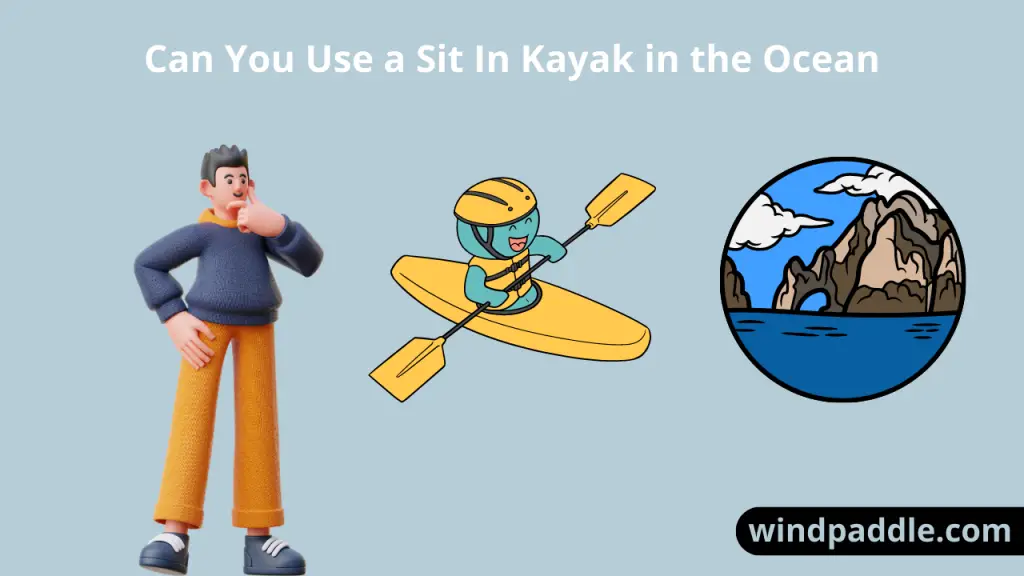
If you’re wondering if you can utilize the superior stability of a sit-in kayak in the ocean, the short answer is yes. However, this doesn’t mean you could go out there and use a sit-in kayak on your first ocean adventure.
It would be best if you had mastered the basics before you could confidently go out with a sit-in kayak out at sea. For beginners, using a sit-on-top kayak for your ocean voyages is still recommended.
Pros and Cons of a Sit-In Kayak
There are plenty of general advantages to sit-in kayaks, and some even translate to open ocean kayaking very well. But, on the other hand, there are disadvantages as well that may be devastating to beginner paddlers if they ever find themselves in certain situations while out on the open seas.
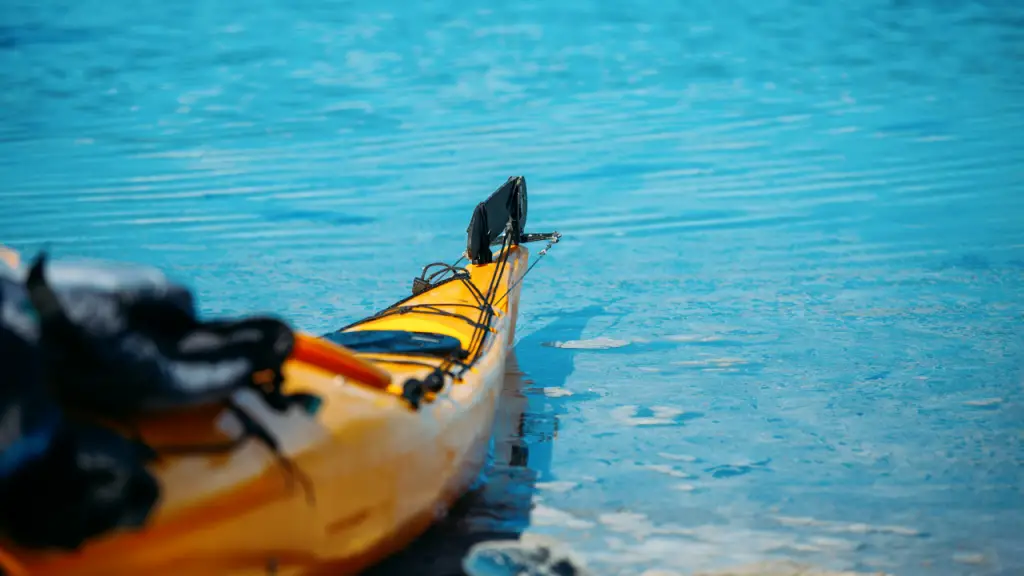
Pros
- A lower center of gravity means more power for each stroke.
- A shorter bow-to-stern length means it’s more maneuverable.
- Having your knees pressed against the deck gives you more control over the boat.
- The cockpit, especially if you fit your kayak with a spray skirt, prevents water from accumulating inside the ship.
Cons
- Beginners often feel restrained in the cockpit, making them uncomfortable about the idea of capsizing.
- If hatch covers get blown off by turbulent oceans, the kayak could sink if enough water accumulates in both the hull and bow of the boat.
- Because of their narrow designs, sit-in kayaks tend to roll over, especially if the paddler is a beginner.
Dangers of Ocean Kayaking
Part of the joy of open ocean kayaking is being one with nature. You get to commune with the elements in a way you can’t do with other forms of transportation
But as beautiful as it is, the ocean is also dangerous. Here are some of the dangers that you need to be aware of when you’re out kayaking in the open seas:
High winds and waves: The ocean is known for its strong winds and waves. This can be a problem for kayakers because it can quickly capsize your boat.
Strong currents: Another danger of the ocean is the strong currents. These can quickly sweep you away from shore and into deep waters.
Large boats: When you’re out in the open ocean, you must be aware of other larger boats. These boats can create waves that can capsize your kayak.
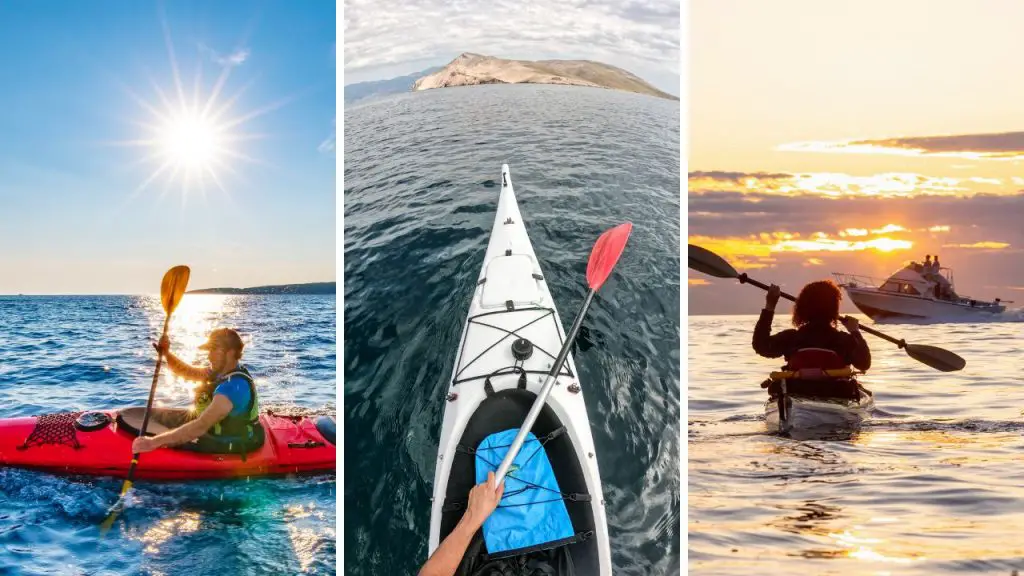
All of these dangers are amplified by the fact that sit-in kayaks are not the most stable vessels out there. This is why it’s essential to be aware of your surroundings and to paddle with caution when you’re kayaking in the ocean.
What Type of Kayak Is Best For The Ocean?
There are plenty of kayak styles to choose from, but there are only a few that would suit ocean traverses.
For starters, you’ll want a kayak built from durable materials as you can’t foresee what you’ll have to go through while you’re out in the middle of the ocean.
You’ll also want a kayak that is designed for tracking. This means it should be able to travel in a straight line even when waves and currents are trying to push it off course.
So, if you’re looking to buy a kayak that you’re specifically going to use at sea, you may want to look at kayaks designed for the purpose.
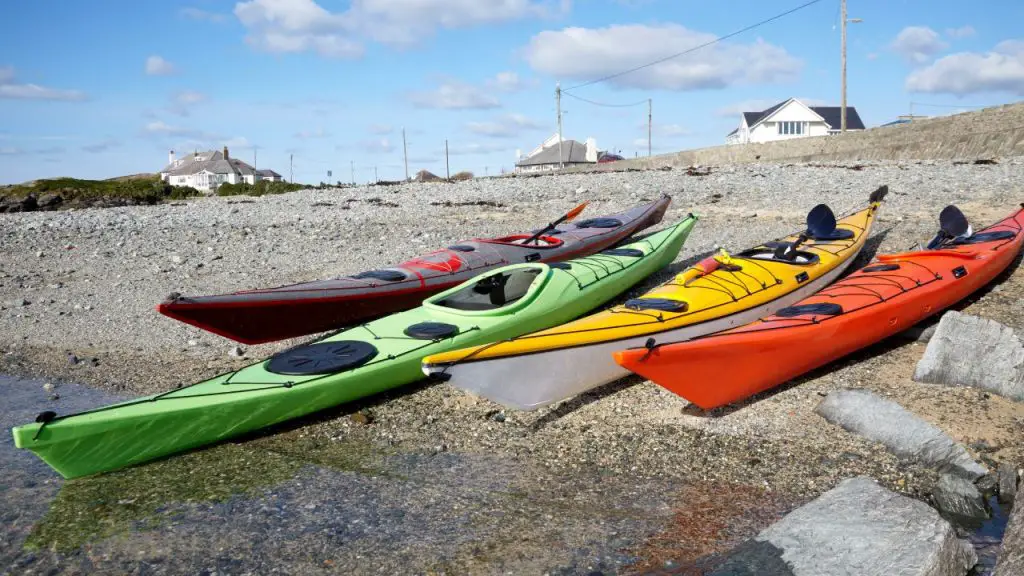
Sea kayaks or, as they’re also sometimes referred to as, touring kayaks are long and narrow vessels made from the most robust materials such as roto-molded polyethylene resins, kevlar, or even carbon fiber.
Sea kayaks often sacrifice maneuverability for seaworthiness. This means its hull design is either rounded or v-shaped, which prevents it from rolling over much better than other designs. It also helps improve the boat’s tracking ability and glide, letting it cruise more efficiently across waves with minimal effort.
To further help with tracking, sea kayaks are also often equipped with rudders and skegs. These devices can be deployed when needed to help the kayak track in a straight line.
Rudders are controlled with foot pedals located in the cockpit, while skegs are often fixed and can’t be deployed unless you stop and get out of the kayak to do so.
Wilderness Systems Rudder Kit
Sea kayaks also generally have more carrying capacity to help paddlers bring everything they need on an exploratory trip.
These watertight storage spaces, also called bulkheads, double as a flotation mechanism that prevents your kayak from sinking in case it takes on too much water. While most kayak varieties have them, sea kayaks often have two or more bulkheads for even more protection.
Wilderness Systems Tempest 170 | Sit Inside Touring Kayak
While there are sea kayaks with sit-in cockpits, the best sea kayaks to use when you’re journeying beyond swimming distance are ones with sit-on-top cockpits
Although these kayaks may be less maneuverable, they are basically unsinkable, giving paddlers more confidence to venture further out into the open seas.
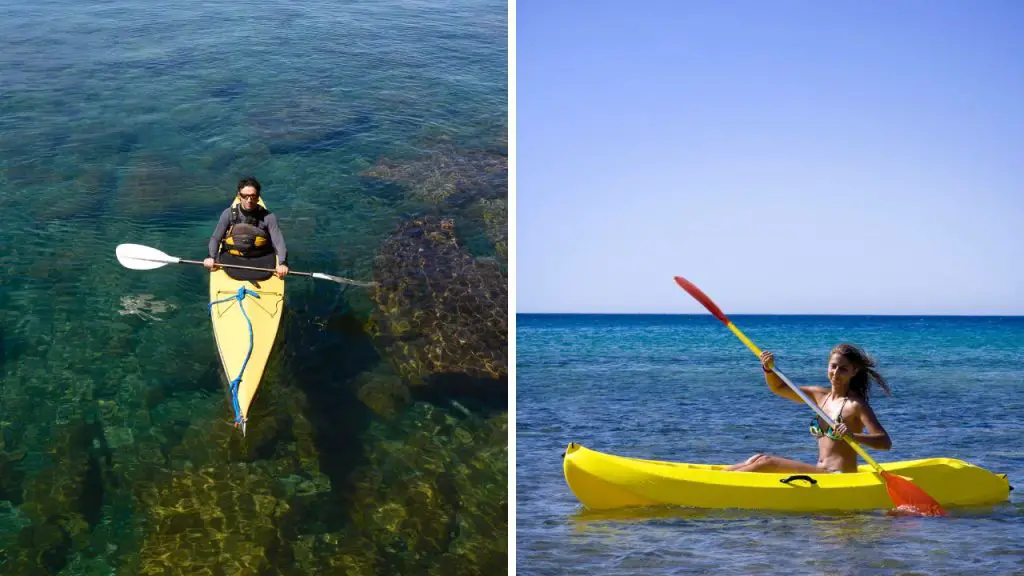
Tips for Ocean Kayaking
Now that you know what type of kayak is best for ocean use, here are a few tips to help you have a safe and enjoyable experience out on the water:
- Check the weather conditions before you go. This is especially important if you’re planning on kayaking in the open ocean. Strong winds and waves can quickly capsize your kayak, especially if it has a closed cockpit, so it’s important to know what you’re getting into.
- Make sure you have all the necessary safety gear before you go. This includes a life jacket, a whistle, and a flare gun.
Orion Safety Combo Alerter Coastal Signalling Kit Aerial Flare Refill Kit
- Don’t go out alone. It’s always best to paddle with someone else in case of an emergency.
- Be aware of your surroundings. This means keeping an eye out for other boats, waves, and currents.
- Paddle with caution. Sit-in kayaks are not the most stable vessels, so taking things slowly when you’re paddling in the ocean is essential.
- Choose the right kayak based on your experience. Sit-in kayaks may be faster and more maneuverable than sit-on-top kayaks, but they’re also much more unwieldy during emergencies.
- Ocean kayaking is already an advanced activity, so it’s essential to learn the basics before you go off on your own.
FAQs
Are sit-on-top kayaks good in the sea?
Yes. They’re the recommended kayak types for beginners.
Can I use a lake kayak in the ocean?
Yes. However, maneuverability and tracking might be a problem since they’re not designed for taking on waves.
Can you use a river kayak in the ocean?
River kayaks may be used in the ocean. They have the same general design and can handle waves a little better than lake kayaks.
What is the difference between an ocean kayak and a regular kayak?
An ocean kayak is typically longer, has more bulkhead, and are designed for tracking straight despite the waves or currents.
Key Takeaways
When it comes to kayaking in the ocean, you need a specifically designed kayak. These kayaks are called sea kayaks and differ from the typical river or lake kayak in a few key ways.
Most notably, they’re designed to be more stable and have better tracking abilities. They also often have sit-on-top cockpits as opposed to sit-in cockpits.
If you’re thinking of going ocean kayaking, make sure to check the weather conditions and have all the necessary safety gear with you.
It’s also vital to paddle with someone else and be aware of your surroundings. Lastly, choose a kayak that’s appropriate for your experience level.
With these tips in mind, you should be well on your way to having a safe and enjoyable experience kayaking in the ocean.



